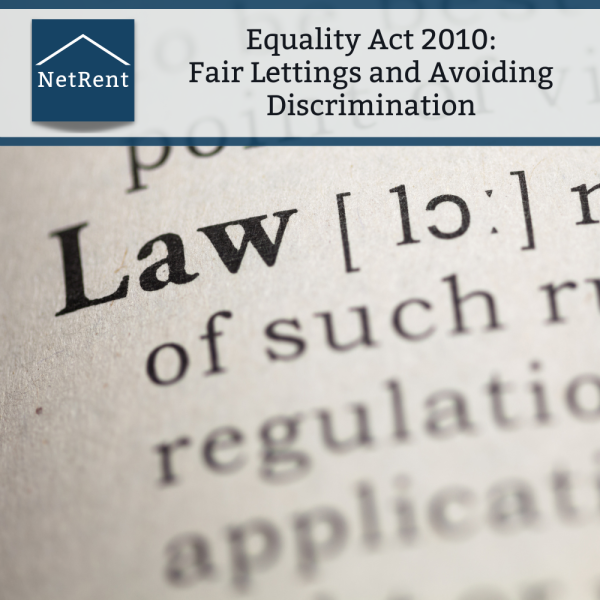In an increasingly diverse rental market, fairness isn’t just good business — it’s the law. The Equality Act 2010 brought together over 100 previous anti-discrimination laws into one unified framework. For landlords, it sets out the standards of conduct expected when advertising, selecting, and managing tenants.
Understanding your responsibilities under the Act protects you from legal claims and reputational damage — and helps you manage your property professionally, ethically, and inclusively.
Why the Equality Act 2010 matters
The Act applies to anyone providing accommodation, whether directly or through an agent. It prohibits discrimination, harassment, and victimisation based on certain protected characteristics.
In lettings, this affects how you:
-
Advertise your property.
-
Choose tenants.
-
Manage tenancies and interactions.
-
Handle repair requests or disputes.
-
End a tenancy.
Even unintentional discrimination can lead to complaints, financial penalties, and civil claims.
The nine protected characteristics
Under the Act, it’s unlawful to treat someone unfairly because of:
-
Age
-
Disability
-
Gender reassignment
-
Marriage and civil partnership
-
Pregnancy and maternity
-
Race (including colour, nationality, and ethnic or national origins)
-
Religion or belief
-
Sex
-
Sexual orientation
These protections extend to tenants, prospective tenants, and even those associated with them (e.g. family members or carers).
Types of discrimination landlords must avoid
1. Direct discrimination
When a landlord treats someone less favourably because of a protected characteristic.
Example: Refusing to rent to a tenant because they are from a certain ethnic background.
2. Indirect discrimination
When a rule or policy applies to everyone but disadvantages people with a particular characteristic.
Example: A “no children” policy could discriminate against women (who are statistically more likely to be primary carers).
3. Harassment
Unwanted conduct related to a protected characteristic that violates a tenant’s dignity or creates a hostile environment.
Example: Making derogatory remarks about a tenant’s religion.
4. Victimisation
Treating someone badly because they have made or supported a complaint under the Equality Act.
Example: Refusing to renew a tenancy after a tenant complained of discrimination.
Disability and reasonable adjustments
This is the area where landlords often get caught out.
Landlords and agents must make “reasonable adjustments” to ensure that disabled tenants can enjoy their home on an equal basis with others.
Examples of reasonable adjustments:
-
Allowing minor adaptations such as grab rails or ramps.
-
Permitting a tenant to install mobility aids at their own cost.
-
Adjusting policies — e.g. allowing an assistance dog despite a “no pets” rule.
However, landlords are not automatically required to make structural changes to the property unless funded or arranged through local authority adaptation grants.
It’s about being fair, flexible, and responsive to a tenant’s needs.
Advertising and tenant selection
Discrimination can begin long before a tenancy agreement is signed.
Avoid phrases like:
-
“Ideal for single professionals.”
-
“No DSS / No benefits.”
-
“No children / No foreigners.”
These may be seen as discriminatory — particularly against disabled people, families, or ethnic minorities.
When choosing tenants, focus on objective, financial, and referencing criteria, not personal judgments.
Best practice:
-
Have clear, written selection criteria.
-
Apply the same process to every applicant.
-
Keep records of all communications and decisions.
Managing tenancies fairly
Once the tenancy starts, landlords must continue to treat all tenants equally. Common pitfalls include:
-
Ignoring repair requests or treating some tenants’ concerns less seriously.
-
Harassing behaviour (directly or through contractors).
-
Evicting or threatening eviction based on personal bias.
The same professional standards must apply throughout the tenancy — from day one to move-out.
Legal consequences
Tenants who believe they’ve been discriminated against can:
-
Bring a claim in the County Court within six months of the incident.
-
Seek compensation for injury to feelings and financial loss.
-
Report landlords or agents to the Equality and Human Rights Commission (EHRC).
Landlords found guilty of discrimination may also struggle to obtain possession orders, renew licenses, or work with letting platforms.
Compliance checklist for landlords
✅ Avoid discriminatory wording in advertisements.
✅ Base tenant decisions on financial and referencing criteria only.
✅ Document all communications with prospective and current tenants.
✅ Understand your obligations to make reasonable adjustments.
✅ Treat all tenants with professionalism and respect.
✅ Train staff or letting agents in fair housing practices.
Key takeaway
The Equality Act 2010 is not about limiting who landlords can rent to — it’s about ensuring everyone has an equal opportunity to access safe, secure housing.
Fairness, consistency, and respect aren’t just legal duties; they’re key to maintaining a positive reputation and long-term tenant relationships.
When landlords operate inclusively and transparently, everyone benefits.
Disclaimer: NetRent does not provide legal advice. These articles represent our understanding of rental property law.
Contact NetRent
Telephone: 01352 721300
Email: support@netrent.co.uk


